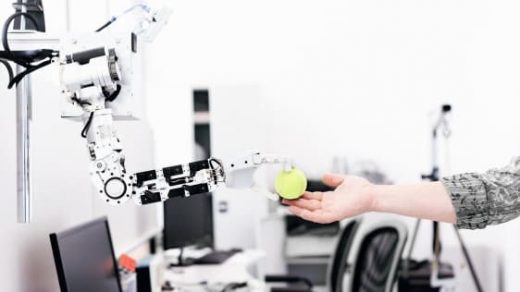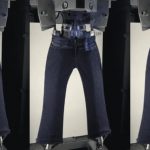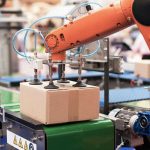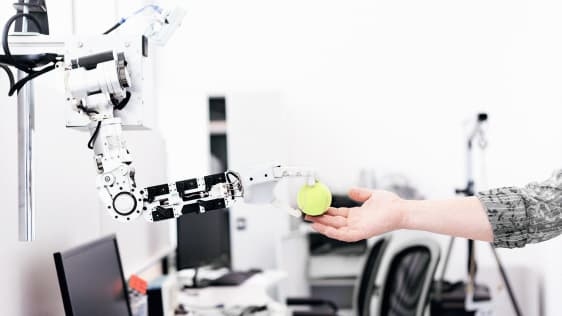How Should Your Company Prepare For Robot Coworkers?
“The robots are coming! The robots are coming!” seems like a familiar sentiment as robotics, artificial intelligence, and machine learning become more ubiquitous in workplace settings.
It’s not without merit. A December 2017 survey by insurance and risk management advisory firm Willis Towers Watson in Arlington, Virginia, found that U.S. companies will nearly double the amount of work done by automation (to 17%) within the next three years. Ninety-four percent of companies that are already using robotics and AI will expand their use of automation by 2020.
But are companies ready for those changes? Maybe not, the survey found. Less than 5% of respondents say their HR functions are fully prepared for the changing requirements of these new ways of working.
“So we’re getting beyond the hyperbole of, ‘Robots are going to replace humans,’ and thinking about this in a more nuanced and practical way,” says Renee Smith, who leads the Future of Work consulting activities at Willis Towers Watson. Instead, employees will need to integrate the work that’s done through automation or algorithmic technologies and learn how these tools can enhance performance. Organizations need to start thinking about how the workplace changes when people work side by side with technology, and how to get them ready to do so successfully, she says.
It Starts With The Job
Some technology is designed to replace headcount, while other technology is designed to remove repetitive or rote tasks from employees’ responsibilities, freeing up time to focus on tasks with higher returns, says David Poole, CEO of Boston-based Symphony Ventures, a consulting and managed services firm. So, if a call center is using interactive voice response (IVR) technology and is designed to automatically deliver customer data through an interface, the customer service representative can spend more time focusing on the customer and finding solutions based on the latest information, versus looking for historical data or typing information into a platform.
The key to integrating these technologies successfully is to break down each role’s workflow and look for automation opportunities, says Kris Hauser, PhD, associate professor in the Pratt School of Engineering at Duke University in Durham, North Carolina. Jobs that have elements of retrieving information, scheduling, and calculating numbers lend themselves to being enhanced by automation. By taking those tasks out of the workday, employees can spend more time on activities that are harder to automate, such as interacting with people, thinking over long time scales, developing strategies, and managing complicated work scenarios such as construction.
“So, if you’re looking for job security, this might get into more creative or adaptive sorts of fields,” he says.
Reconstructing Work
Once components of the job are automated, employees need to be trained or coached in how to reconstruct their jobs so their time is spent on high-value activities, Smith says.
EisnerAmper is collaborating with IBM Watson to develop Smart Audit Tools. These tools use AI to analyze documentation, validate source data, and eliminate other routine, predictable tasks, says Charles Weinstein, CEO. With 1,500 employees, enacting a widespread shift in how work gets done is no small feat. But roughly a year and a half ago, he says the leadership team saw the potential—and the necessity—as AI, automation, and robotic process automation become more prevalent among their competitors.
After a three-day offsite meeting with the company’s partners, the leadership team was convinced that integrating more automation was essential. While the firm used to have its people reading dozens and dozens of contracts and comparing them to accounting standards, today Watson does that.
“We spend our time analyzing the output from Watson now in helping clients maximize their revenue flows as opposed to reading contracts and comparing it to accounting literature,” he says. Of course, they still need to check that the analysis is accurate, but “the work for our staff is becoming less rote and more advisory, which is a good thing,” he adds.
Weinstein says that kind of refocusing strengthens clients’ relationship with the firm and makes employees more valuable. In addition, they have more flexibility. More work can be done remotely because they don’t need to be in the office, reading contracts and comparing numbers. HR teams, managers, company leaders, and the employees themselves must recognize that these changes will shift the fundamental assumptions about and requirements for how work gets done and respond to those shifts, Smith says.
Using The Tools Wisely
However, the transformation of work is only as good as the tools that facilitate it–and the ability of people to use them. Many of today’s automation tools have significant limitations and require human input and management to be most effective, Hauser says. You can’t teach the system to do more than it’s designed to do, he says. However, by giving it feedback or making tweaks to its programming, a company and its workers could make it better. A very simple example of how humans can give feedback to help refine a system is spam filtering. As you mark certain email messages as spam or not, the platform begins to be more effective at filtering out what you don’t want and keeping what you do. Similarly, if an automation platform has feedback mechanisms, employees should be trained to use them to improve the system.
As new technologies emerge, new security concerns do, too. Employees need to be trained in how to keep such platforms safe from cyber criminals, to the extent that they can control, Poole says. And HR professionals are going to need to integrate these tools into their own work, as well as become part futurist, looking at the skills that will be needed for certain roles in the long-term and recruiting for those skills, Smith says.
People are also going to have to accept new ways of getting things done, especially when they’re more efficient, and be forward-thinking about where technology will disrupt traditional jobs, Hauser says. For example, within the next two decades, autonomous vehicles will fundamentally change how goods and people are transported. Understanding how those shifts will affect your company and your employees’ roles will be essential for maximizing the potential for both through retraining and reconstructing their roles.
These changes also require a shift in culture where employers recognize the value of the employees’ new roles, while helping them make the most of their opportunities. Some workers may not be comfortable with the higher-level tasks or responsibilities of their new jobs. “You have to focus on being analytical and problem solving,” he says. “How do you get people comfortable with the uncomfortable? Change management,” he says.
Fast Company , Read Full Story
(50)














